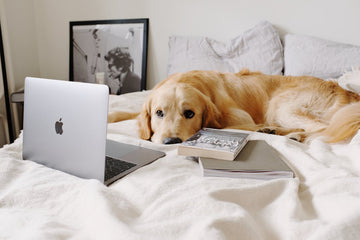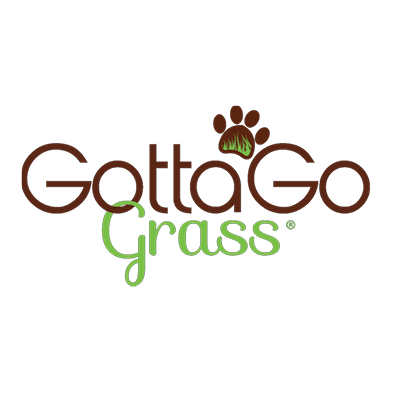
If you’ve ever walked into a room and found a tiny puddle or a suspicious damp spot on the leg of your sofa, you’re not alone. Many dog owners—especially those living in apartments or homes without outdoor access—know the frustration of dealing with marking behavior. Unlike regular potty accidents, marking isn’t about a full bladder; it’s your dog’s way of saying, “This spot is mine.”
While it’s a natural behavior, it can quickly turn your home into a patchwork of unwanted scents. And no matter how much you clean, dogs tend to revisit those marked areas, thinking they’re supposed to. But what if there’s a way to redirect that instinct? Grass pee pads for dogs emerge as a natural potty solution designed to appeal to your dog’s instincts while keeping your home fresh and mess-free.
What is Dog Marking Behavior
Before you can stop marking, it helps to understand why it happens.
Dog marking is a form of communication, not a bathroom break. When a dog lifts its leg or squats to leave a small amount of urine, it’s sending a scent-based message to other dogs. These markings can signal territory, familiarity, or even a bit of anxiety, depending on the situation.
Why Dogs Mark
Marking can be triggered by all sorts of things:
-
Claiming territory: Especially in shared spaces or multi-pet homes.
-
New scents or guests: A new couch, a visitor, or even groceries with another pet’s scent can spark the need to mark.
-
Stress or anxiety: Dogs sometimes mark when they’re uneasy—such as after moving to a new home or during changes in routine.
-
Mating instincts: Unneutered males—and even some females—often mark to attract mates or assert dominance.
Who’s Most Likely to Do It
Marking is most common in unneutered males, but it’s not exclusive to them. Females, newly adopted pets, and dogs adjusting to new environments can also start marking. Even well-trained adult dogs may revert to marking if something disrupts their normal routine—like new furniture, guests, or strange smells.
Think of it this way: your dog’s nose is their social network, and marking is simply their way of posting a status update for other dogs to notice.
Why Traditional Training Doesn’t Always Work
You might be wondering, “But my dog’s house-trained—why is this still happening?” That’s the tricky part: marking and potty training aren’t the same thing.
A dog can be perfectly house-trained and still mark inside because the motivation isn’t about needing to relieve themselves—it’s about communication or stress.
Traditional methods, like scolding or rubbing their nose in it, tend to backfire. Punishment can heighten anxiety, which ironically leads to more marking. In many cases, dogs simply need a clear, consistent, and scent-friendly place where marking or peeing feels right. Grass pads can fill that role perfectly, making the distinction easier for them to understand.

How an Indoor Grass Pad for Dogs Can Help
Grass pads are more than just an indoor potty option—they tap directly into your dog’s instincts. Here’s why they work so well:
-
Natural scent and texture: Real grass pads mimic the smell and feel of the outdoors, signaling to your dog that this is the appropriate place to go. A dog grass pee pad creates a familiar environment that encourages positive potty behavior.
-
Scent association: Once your dog uses the pad a few times, they begin to associate that specific spot with going potty, helping to break the habit of marking elsewhere.
-
Convenience: Perfect for pet parents who live in apartments, have limited outdoor access, or face bad weather days.
-
Consistency: Having a dedicated, consistent potty area gives your dog structure. It reduces confusion and stress—two major causes of indoor marking.
Think of a grass pad as your dog’s designated bathroom space. It gives them a clear outlet for their marking urges—without putting your furniture or carpet at risk.
Tips for Transitioning to a Grass Pad
Making the switch to a natural grass pad takes a bit of patience, but with the right approach, most dogs catch on quickly.
-
Start where your dog already marks. Place the grass pad in or near their favorite marking spot. Once they’re consistently using it, gradually move it toward your preferred location.
-
Add positive reinforcement. Every time your dog uses the pad correctly, offer treats, praise, or playtime with their favorite dog toy ball. This reinforces the idea that going on the pad leads to good things.
-
Keep it clean. Dogs are sensitive to smell. A soiled pad can make them look for another area to mark—usually your floor or rug. Replace the grass pad and rinse the tray every 2–4 weeks, or sooner if you notice strong odors or discoloration.
-
For male dogs: Some dogs prefer to lift their leg, even indoors. Placing a small post, fake fire hydrant, or vertical object on the pad can make the experience more natural for them.
-
Watch for cues. Sniffing, circling, or pacing often means your dog’s about to mark. Gently guide them to the grass pad before they make their move.
With consistency, your dog learns that the grass pad is the go-to spot for both potty time and marking behavior.
When to Seek Extra Help
Even with the right setup, some dogs may continue marking, and that’s usually a sign of something deeper. Medical issues like urinary tract infections, bladder stones, or incontinence can mimic marking behavior, so a vet check is a good first step. Anxiety and stress—especially from changes in routine or separation—can also play a role, in which case calming tools or behavior support may help.
If the behavior persists even after neutering or consistent training, it may be time to work with a certified trainer or animal behaviorist who can identify your dog’s specific triggers. Remember, marking isn’t about defiance; it’s your dog’s way of communicating, and understanding the cause is the first step to stopping it.

Final Thoughts
Marking inside the house can be frustrating, but it’s not something you have to just live with. Understanding why your dog marks is the first step; offering them a natural, structured solution is the next.
Grass pads create an instinctive outlet for your dog’s need to communicate and relieve themselves—without ruining your floors or furniture. They provide the scent, texture, and consistency dogs crave, while giving pet parents a cleaner, more manageable home environment.
With patience, praise, and the right tools, you can guide your furry friend toward better habits. Soon enough, your home will be fresher, calmer, and completely mark-free—proof that a patch of grass really can go a long way.




